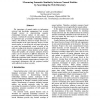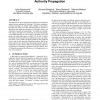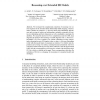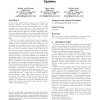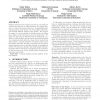ISM
2005
IEEE
14 years 5 months ago
2005
IEEE
Ubiquitous Computing foresees a massively networked world supporting a population of diverse but cooperating mobile devices where trust relationships between entities are uncertai...
WEBI
2007
Springer
14 years 5 months ago
2007
Springer
The importance of named entities in information retrieval and knowledge management has recently brought interest in characterizing semantic relationships between entities. In this...
WEBI
2007
Springer
14 years 5 months ago
2007
Springer
— We consider the problem of finding the relevant named entities in response to a search query over a given text corpus. Entity search can readily be used to augment conventiona...
WEBDB
2007
Springer
14 years 5 months ago
2007
Springer
This paper pursues the recently emerging paradigm of searching for entities that are embedded in Web pages. We utilize informationextraction techniques to identify entity candidat...
LADC
2007
Springer
14 years 5 months ago
2007
Springer
A distributed dynamic system is a fully distributed system subject to a continual arrival/departure of the entities defining the system. Another characterizing dimension of these ...
INEX
2007
Springer
14 years 5 months ago
2007
Springer
Abstract. Many realistic user tasks involve the retrieval of specific entities instead of just any type of documents. Examples of information needs include ‘Countries where one ...
ER
2007
Springer
14 years 5 months ago
2007
Springer
Abstract. We investigate the computational complexity of reasoning over various fragments of the Extended Entity-Relationship (EER) language, which includes a number of constructs:...
CIKM
2007
Springer
14 years 5 months ago
2007
Springer
A user-centric entity detection system is one in which the primary consumer of the detected entities is a person who can perform actions on the detected entities (e.g. perform a s...
CIKM
2007
Springer
14 years 5 months ago
2007
Springer
Heterogeneous entities or objects are very common and are usually interrelated with each other in many scenarios. For example, typical Web search activities involve multiple types...
IWPSE
2007
IEEE
14 years 5 months ago
2007
IEEE
Software systems need to change over time to cope with new requirements, and due to design decisions, the changes happen to crosscut the system’s structure. Understanding how ch...

